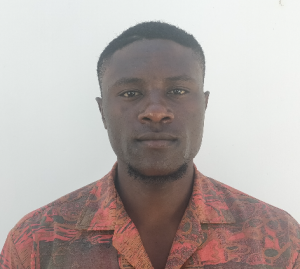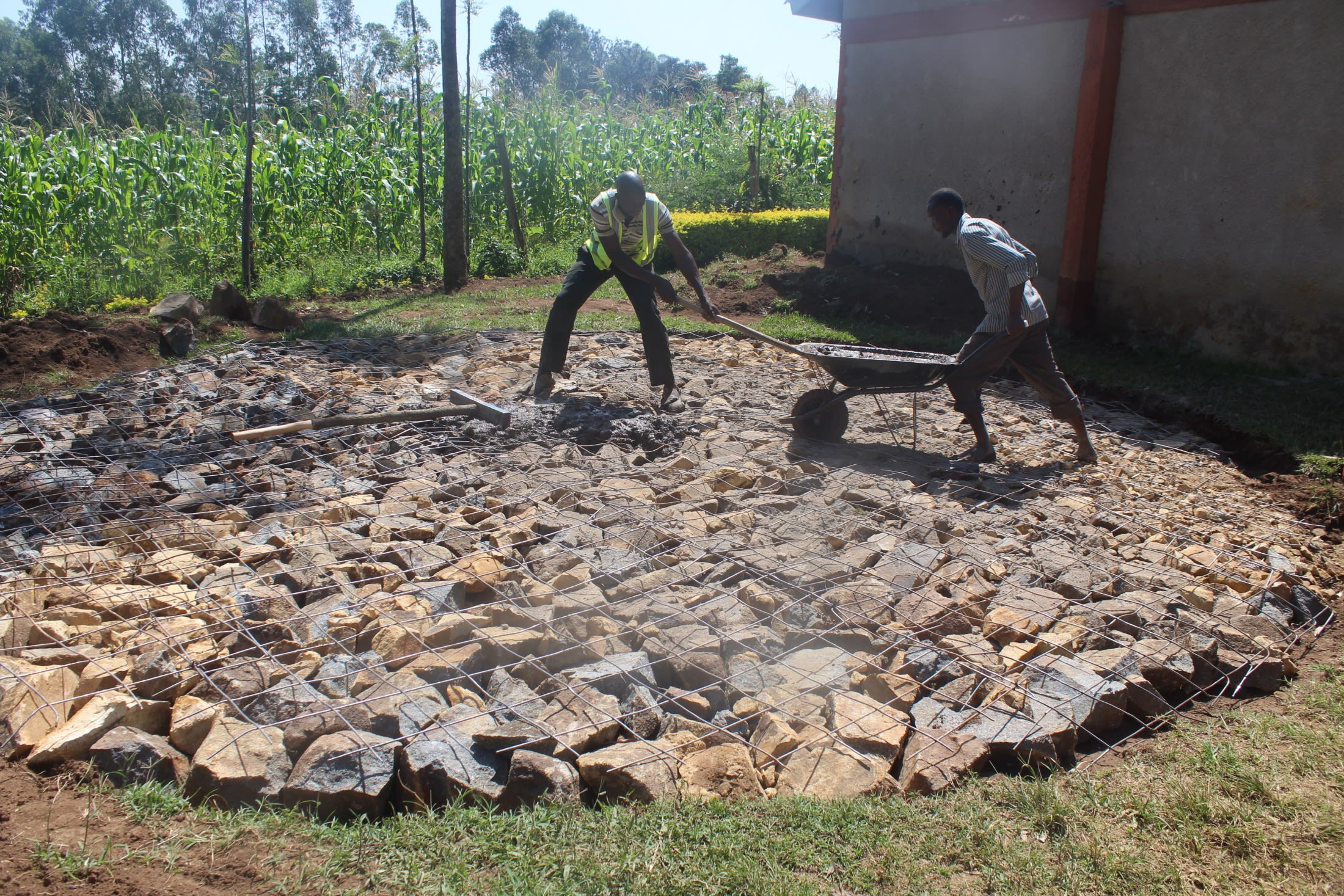Epanja Secondary School was established in 2013 through the Constituency Development Funds under the sponsorship of the Anglican Church of Kenya (ACK). In 2016, the school saw their first student admitted to university and several others joined the middle-level colleges. Still a relatively young school, Epanja Secondary currently serves 180 students and 18 teachers and staff.
Yet, the school lacks sufficient and reliable water, impacting the daily class schedule. Thair lack of water combined with a recent condemnation of the girls' latrines led to the school receiving a verbal warning from the Ministry of Health, urging the school to improve their water and hygiene situation or risk complete closure this year.
The school's main water source is a very small plastic rain tank. The school accesses the rain tank's water through several taps a few meters away from the tank, connected through underground hoses. Due to its small capacity, most of the year the rain tank sits dry, running out of water after only a few days once the rains subside.
Some students opt to bring water from home, but it is a burdensome choice to walk to school carrying a full jerrycan along with books every day. Hence, most students do not choose to do this. Therefore, when the tank runs dry, students must walk to a spring far away in the village to fetch water.
Students head to the spring both before their morning classes and during their lunch break to try to keep up with the entire school's drinking, cooking, and cleaning needs. Still, the school falls short in its supply of water compared to the demand, and students miss precious class time on each walk and wait in line at the spring. Conflicts are also common at the spring between community members, who claim students ruin their sugarcane crops growing along the path to the spring. By the time students return to class, they are often tired and unable to focus well, affecting their performance.
"The situation affects me negatively since the water is not enough and I have to go out and fetch water during class time - I don't like it," said pupil Sharon.
The only other source of water on campus is seasonal hand-dug well, meaning it too dries up during the dry season each year. The school knows the well water is not the safest of their options, and they try to limit the well water to cleaning needs only. Students and even the school feeding program still resort to drinking the well water, however, in an effort to avoid the trek to the spring.
With water coming from several different sources, and not all of which are safe, students' risk for water-related illnesses increases. Water is combined for use at school, so even one contaminated source means everyone is at risk of getting sick. Most students report water-related diseases including typhoid and amoeba. Some have constipation because they fear using the water in school, leading to dehydration. The teachers, too, have complained of contracting typhoid. Some of students' home water sources are unknown, and many students have developed a phobia of drinking the water their peers collect.
"Sometimes, I go without drinking water as the ferrying of the water is unsafe and I suspect it, especially when the captured rainwater finishes," said teacher Khayiya Nyongesa, echoing the students' fear of the various water sources' safety.
When students get sick, they miss more class time, and their families lose their financial resources to their children's medical treatment. Some students even skip their afternoon lessons, deciding once they get to the spring that they do not have the energy to walk back to school with their water.
What We Can Do:
Rain Tank
A 75,000-liter rainwater catchment tank will help alleviate the water crisis at this school. The school will help collect the needed construction materials such as sand, bricks, rocks, and water for mixing cement. We will complement their materials by providing an expert team of artisans, tools, hardware, and the guttering system. Once finished, this tank will begin catching rainfall that will be used by the school’s students and staff for drinking, handwashing, cooking, cleaning, and much more.
We and the school strongly believe that all of these components will work together to improve standards at this school, which will help lead to better student academic performance and will help to unlock the potential for these students to live better, healthier lives.
Handwashing Stations
The student health club will oversee the 2 new handwashing stations we will provide, and make sure they are kept clean and in working condition. The club leaders will fill the handwashing stations with water daily and make sure they are always supplied with a cleaning agent such as soap or ash.
VIP Latrines
The school had to demolish the girls' latrines in late 2020 as they had collapsed and posed a danger for the students. A new block of latrines that were intended for the boys is now being shared with the girls, leaving the girls without a latrine block designated only for their use, and rendering the boys unable to use their new urinal facilities.
We will construct 2 triple-door latrine blocks using local materials that the school will help gather. 3 doors will serve the girls while the other 3 will serve the boys. All of these new latrines will have cement floors that are designed to be easy to use and to clean. And with a rain tank right on school property, there should be enough water to keep them clean.
Training on Health, Hygiene, COVID-19, and More
We will hold a 1-day intensive training session with students, teachers, and parents. This training will cover a wide range of topics including COVID-19 symptoms, transmission routes, and prevention; personal and environmental hygiene; and the operation and maintenance of the rain tank, latrines, and handwashing stations. There will be a special emphasis on handwashing.
Our team of facilitators will use a variety of methods to train, including participatory hygiene and sanitation transformation, and asset-based community development. We will initiate a student health club, which will prepare students to lead other pupils into healthy habits at school and at home. We will also lead lectures, group discussions, and provide illustrative handouts to teach health topics and ways to promote good hygiene practices within the school including handwashing and water treatment. We will then conduct a series of follow-up trainings before transitioning to our regularly scheduled support visits throughout the year.

 Rainwater Catchment
Rainwater Catchment
 Rehabilitation Project
Rehabilitation Project










































